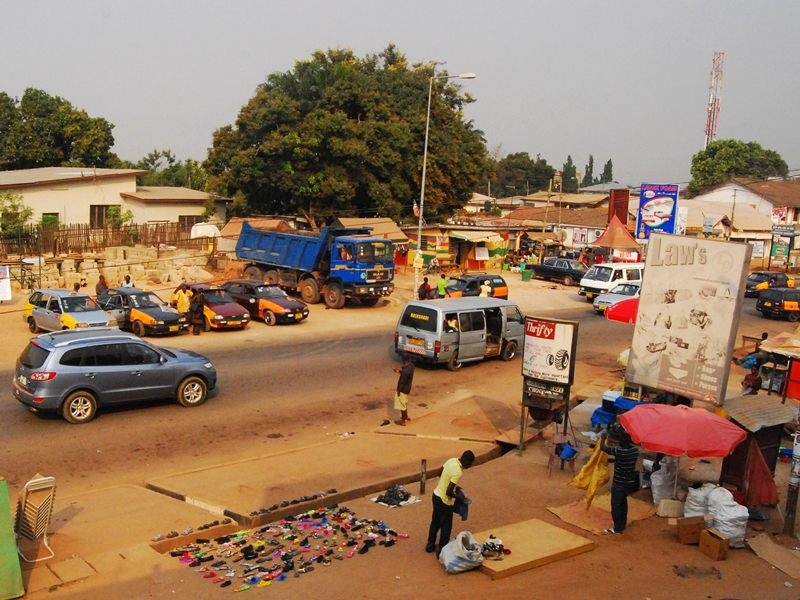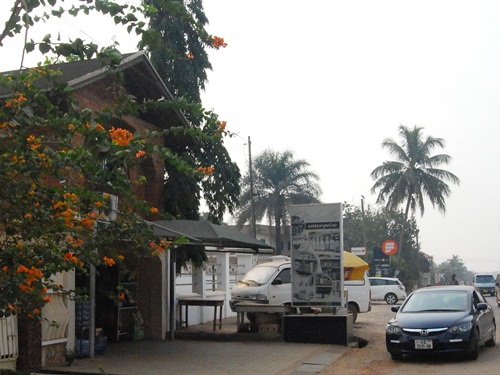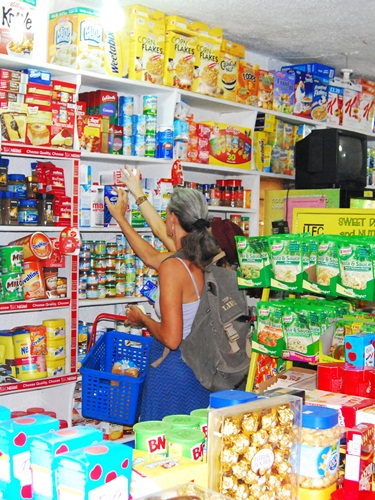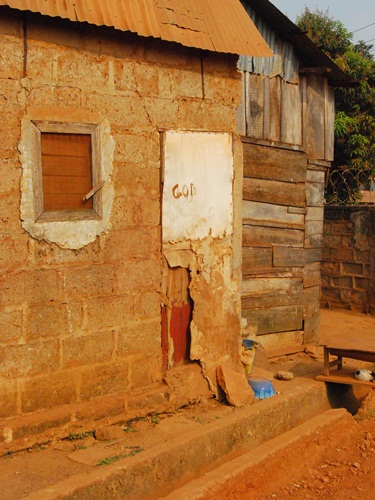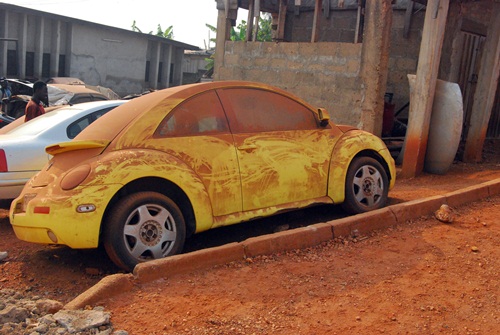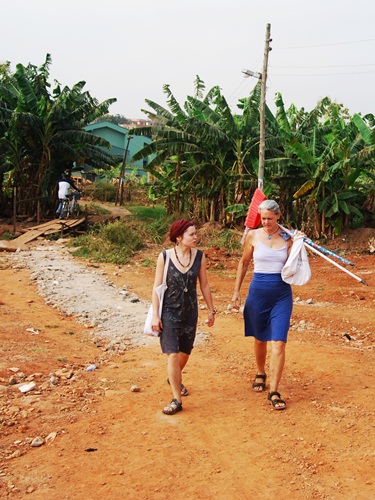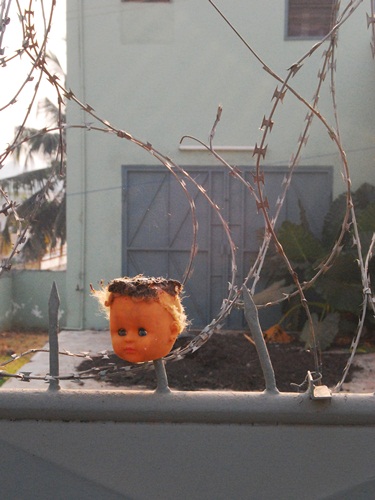Grocery shopping the slow way – with a trip on foot to the ‘best shopping in Kumasi’ on the last day of the month
Thursday, January 31, 2013
DR. J. G. WOOD AT 8:30 IN THE MORNING


A Bob’s-eye view of Amy and Camille as the three of us head down Dr. J. G. Wood towards Atinga Junction and on to Nadville. It’s a fifteen minute walk with lots to see along the way. And many tall tales to tell.
UNDER THE POWER LINES


A vibrant community lives under the power lines. Bob found a shortcut a few weeks ago which takes us across Robteng and past the Extra “O” Chop Bar with advertisements for Pomo tomato paste painted on the wall. Chop means eat so a chop bar is where you go to get food. A “Spot” on the other hand, is where you go to get a beer. The neighborhood is also full of pubs and stands selling “street food.”
NAVIGATION


There are many obstacles to navigate and/or avoid, namely makeshift bridges and concrete ditches. As we approach the main street which will take us to Atinga Junction, we pass a food vendor fanning her charcoal fire with a dustpan.
ATINGA JUNCTION
A junction is exactly what it sounds like – a hub for shared transportation. In Ghana, the most common forms of transportation are tro tros, vans which will seat at least a dozen riders and shared taxis with their yellow fenders. Junctions are also a good place to buy food and anything else that happens to be available. On this day, a man was setting up a display of children’s shoes. Most of the clothing for sale on the street is second hand, shipped to Africa in giant bags from western thrift stores. When Camille was volunteering at Habitat for Humanity several years ago, she noticed a truck would come once a week and take away bags of clothing that was deemed ‘unsellable.’ Now we know where those bags were headed.
RADVILLE!
Nadville is such a radical little shop that we often refer to it as Radville. Like many great finds, you have to know where it is because the name on the sign is so faint. The manager, Isaac welcomed Amy on her first visit, saying “Welcome to the best shopping in Kumasi.” Once inside Camille and Amy had a good look at the soy milk and ultimately chose the one in the blue box because it said “non GM” on the label.
OF GOD AND DOGS
The walk back was equally interesting.
YELLOW BUG AND BAOBAB
Another victim of Harmattan, this bug awaits repair at a neighborhood shop. This is one of two baobab trees we’ve seen here. Bob recalls a childhood ritual of roasting ears of corn over a fire built inside a baobab tree with his friends.
WHAT GOES UP MUST COME DOWN


This is a common sight in Kumasi – half finished and/or crumbling cement block buildings. We tried to understand if this particular building with its cracked wall is being torn down or built up or perhaps both. A man and a young boy with a dusting of grey dirt on his bottom sit in front of their home. Many of the homes under the power lines have the words “To be demolished by K.M.A.” and a date in the past. K.M.A. is the Kumasi Metropolitan Authority. We aren’t sure if the K.M.A. intended to do the demolishing or if it was the responsibility for the residents to tear down their own homes.
HOME AGAIN
We return home, carrying food and cleaning implements and still telling stories. We are welcomed by our latest gate attendant, a baby on a spike which Bob found in the mud of the ditch in front of our house.
____________________________________________________________
[Latest] * [Troutsfarm] * [Casa Kumasi] * [Osda House] * [The Big Pineapple] * [Memory Lane, Tema] * [FS2BD January 2013] * [Walking Through the Rice Fields] * [Shopping at Nadville]
____________________________________________________________
